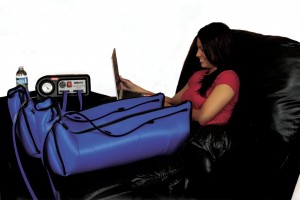By Alyssa Parker –
Finding an effective treatment of leg edema is a challenge many physicians face. Chronic leg swelling that builds up overtime, is often indicative of a serious disorder, and may become disabling if left untreated. There are two types of leg edema venous insufficiency and lymphedema. Unfortunately, Lymphedema is under-recognized in most instances. For years lymphedema has remained a mystery. “Approximately 10 million Americans have lymphedema, following cancer therapy, recurrent infections, injuries or vascular surgery.”Due to the lack of significant research done on the lymphatic system up until recently, medical education has largely ignored it in its curriculum. Consequently, many patients have been misdiagnosed, treated to late, or not treated at all.
Is your edema symptomatic of poor lymphatic circulation or CVI?
The lymphatic system is one of several parts of your circulatory system. Its role is to work as a filtration system draining fluid that enters the blood stream. Through your kidneys, skin, lungs, or intestines the waste is filtered out of your lymph vessels. Your Lymphatic system plays a huge role in assisting your immune system, before any lymph gets recycled into the blood stream; lymphocytes identify and destroy any harmful microbes trying to invade the body. Once lymphedema has set it, fluid will begin to accumulate due to the body’s inability to properly filtrate the lymph fluid. When the lymph fluid becomes trapped your body begins to store it in the interstitial tissue. This is when swelling and inflammation begin to occur.  Damage to the lymphatic system through medical procedures, injuries, or infection is irreversible. Lymphedema may also be inherited in which case you are born with a compromised lymphatic system.
Damage to the lymphatic system through medical procedures, injuries, or infection is irreversible. Lymphedema may also be inherited in which case you are born with a compromised lymphatic system.
Chronic venous insufficiency is another condition that causes swelling in the legs along with open wounds. CVI occurs when the valves in the veins that normally channel the blood to the heart become damaged which then leads to pooling of the blood in the lower extremities. Discoloration of the skin, referred to as hemosiderin staining, is identified by a reddish staining of the lower limb.
From poor circulation shallow wounds may develop due to the stagnant blood that would normally return to the heart. Symptoms vary but may include swelling, aching, itching or burning, varicose veins, infection, chronic venous ulcer, and decreased mobility.
The Search For New Treatments
There is no cure for Lymphedema or Chronic Venous Insuffieciecy. When your circulatory system has been damaged leading to one of these conditions, you must seek treatment to prevent further complications. Lymphedema is a degenerative condition which means it will only get worse over time without treatment. A widely recognized and highly effective treatment is using a compression pump. This is a safe and effective way to assist your body’s circulatory system in moving the excess fluid which has accumulated in the limb and can cause painful swelling, nonhealing wounds, heaviness, and discomfort decreasing your mobility. The compression pump is a gentle massaging technique that compresses in a rythmatic cycle, similar to that of a normally functioning lymphatic system that has not been damaged. This is a great treatment option for patients who have tried compression stocking, elevation, diuretics, or massage with little or no relief.
Check Also
Recurrent UTIs: Addressing the Risk of Antibiotic Resistance
Urinary tract infections (UTIs) are common bacterial infections that affect millions of individuals worldwide each …
 Central Florida Health and Wellness Magazine Health and Wellness Articles of the Villages
Central Florida Health and Wellness Magazine Health and Wellness Articles of the Villages



